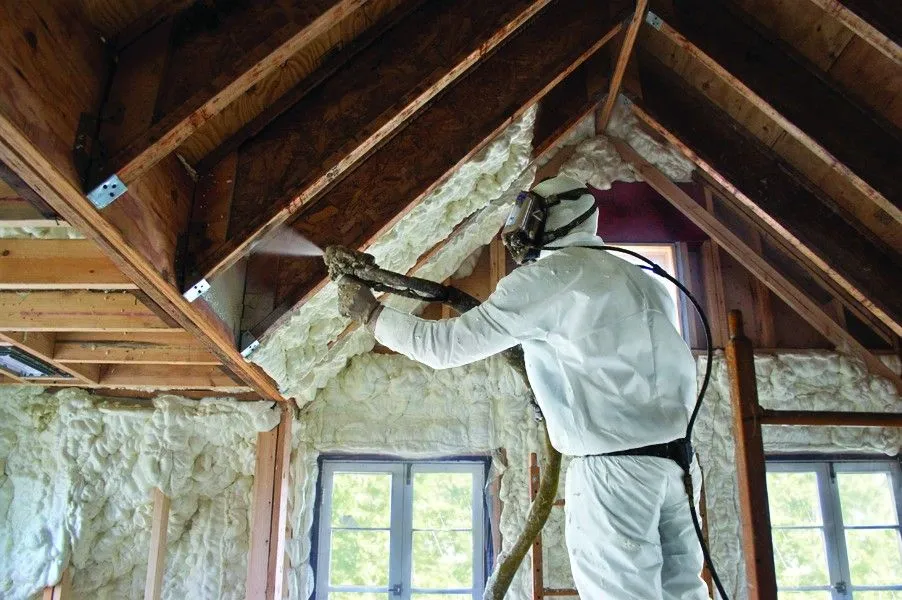
If you own a home or business in McCracken County, KY, you know how unpredictable the weather can be. Hot, humid summers and chilly winters can make it tough to keep your indoor spaces comfortable without running up your energy bills. That’s where spray foam insulation comes in. It’s not just another insulation option—it’s a long-term investment in comfort, efficiency, and savings.
Drafty rooms and high utility bills are often signs your insulation isn’t doing its job. Spray foam solves that problem by expanding to fill every crack, seam, and hidden gap—something traditional materials like fiberglass just can’t do. That tight seal keeps your warm or cool air right where it belongs: inside. Homes and businesses across McCracken County are seeing real energy savings after switching to spray foam.
Sure, spray foam costs more upfront compared to other types of insulation—but the return on investment is hard to beat. Once installed, it doesn’t sag, settle, or deteriorate like fiberglass or cellulose. It holds up for decades, which means you won’t be reinsulating your space every 10 years. Plus, your HVAC system won’t have to work as hard, which can help extend its life and reduce maintenance costs.
With the humidity we see here in Western Kentucky, moisture control is critical. Spray foam doesn’t just insulate—it acts as a barrier that helps keep moisture out of your walls, crawl spaces, and basements. That’s especially true for closed-cell spray foam, which adds an extra layer of protection against mold, mildew, and even pests. It also helps block outside air and allergens, which can improve indoor air quality.
One of the biggest benefits of spray foam is how versatile it is. Whether you’re insulating an attic, sealing up a crawl space, or improving the efficiency of an older commercial building, spray foam molds to any space. It’s great for new construction and just as useful in retrofit projects where access might be tight or irregular. It can even strengthen structural integrity in commercial walls and roofs.
Fiberglass batts, blown-in cellulose, and mineral wool all have their place, but spray foam offers more value overall. It insulates better, seals tighter, and lasts longer. Fiberglass might be cheaper upfront, and mineral wool is good for sound and fire resistance, but neither compares to spray foam when it comes to stopping air and moisture from getting in or out. You’re essentially getting insulation and an air seal all in one.
Before adding spray foam, it’s important to remove any existing insulation. Old material can trap moisture, dust, or even pests—and it might prevent the spray foam from adhering properly. A clean space allows for a better seal and helps the new insulation perform the way it’s meant to. Don’t skip this step if you want the best results.
It’s easy to forget about what’s under your house, but your crawl space plays a big role in energy efficiency. Leaving it uninsulated can lead to moisture problems, uneven temperatures, and higher bills. Spray foam keeps that space sealed and dry, reducing the risk of mold and making your whole home feel more stable and comfortable year-round.
Spray foam isn’t just for one type of project—it works whether you’re starting fresh with new construction or updating an older home. Contractors love how well it adapts to different surfaces and hard-to-reach areas. For older homes in McCracken County, especially those with uneven framing or unique layouts, spray foam can be the perfect fit.
At Armored Insulation, we’ve spent over 13 years helping folks throughout McCracken County and the surrounding region improve their homes and buildings with high-quality insulation solutions. We’re locally owned, fully licensed, and committed to doing the job right the first time.
Give us a call at (270) 727-5566
Email us at [email protected]
Yes. While it costs more initially, it saves you money over time by reducing energy bills and requiring little to no maintenance.
Most spray foam applications last for 30 years or more—far longer than other types of insulation.
Absolutely. Spray foam creates an airtight seal that helps block dust, pollen, and allergens from getting inside.
Yes, and it works especially well in older homes with drafty areas or irregular framing. It fills in gaps other insulation materials can’t.